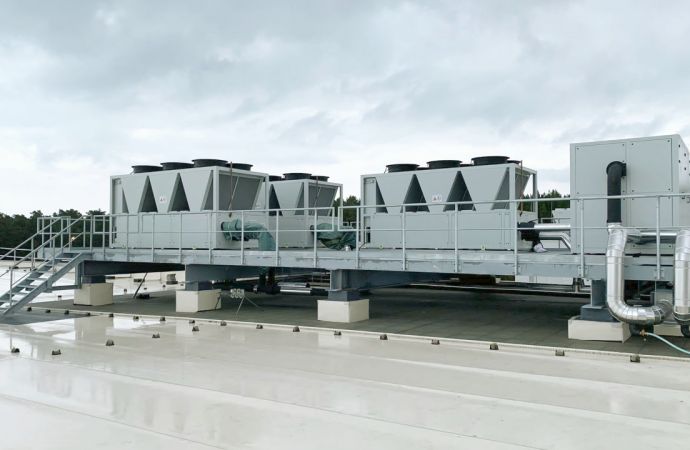A new Norwegian/German study tested the effects of microfinned tubes and brazed plate heat exchangers with minimum internal volume.

Researchers have found that smaller internal volume can reduce charge size in R290 heat exchangers.
Researchers from the Norwegian University of Science and Technology (NTNU), Sintef Energy Research in Norway, and the German Fraunhofer Institute have found that the use of plate heat exchangers with minimum internal volume can reduce the charge by up to 66% in propane (R290) heat pumps.
The researchers also looked at the use of microfinned tubes, and found that they could reduce the refrigerant charge by up to 22%, when compared to smooth tubes.
The results of the study were published in the scientific journal Energies in July. First author on the study is Ehsan Allymehr of the NTNU, and well known natural refrigerants scientist and professor Armin Hafner is one of the co-authors.
The scientists looked at two model systems, firstly an direct air-to-air heat pump with fin-and-tube heat exchangers, and secondly an indirect system equipped with brazed plate heat exchangers (BPHE). The indirect system has “intermediate circuits with a brine-to-air outdoor heat exchanger, and an indoor panel heating and cooling system with water as heat transfer fluid,” the researchers explained in their paper. Three heat exchangers with different internal volumes were used in the simulations for the indirect system.
Each of the two systems were designed to work reversibly, with a 5kW (1.42TR) cooling capacity in summer, and 8kW (2.3TR) heating capacity in winter. The researchers ran two different simulations to calculate the efficiency, and charge required, for each system.
“The refrigerant charge is primarily influenced by the inner volume,” the researchers stated, adding that “microfinned tubes compared to smooth tubes resulted in a maximum charge reduction and volume reduction of 22% and 48%, respectively. For the specially designed BPHE with the minimum internal volume, these values were 66% and 68%, respectively.”
The BPHE system also achieved a higher coefficient of performance (COP) in winter conditions 3.1, compared to 2.6 for the fin-and-tube system. When tested under summer conditions, both system exhibited similar efficiency, achieving a COP of 4.9.
However, the charge-reducing design adjustments did have an adverse effect on the COP. The “COP is reduced by microfinned tubes in System A by up to 9%, and in the specially designed BPHE in System B by up to 10.8%,” the team concluded. “This is most notable in summer conditions.”
Want to find out more, or have something to say about this story? Join the ATMO Connect network to meet and engage with like-minded stakeholders in the clean cooling and natural refrigerant arena.
Related stories



